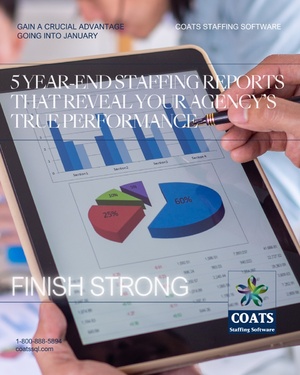Over the last several years, several high-profile cases, most notably Browning-Ferris and Hy-Brand have come for a ruling before the National Labor Relations Board (NLRB).
Josh Eidelson of Bloomberg writes that the crux of both these cases is whether or not employees have the right to pursue a claim against or collectively bargain with corporations that do not sign their paychecks (such as is the case with temporary and contract employees).
The decisions over the past several years have been cyclical, complicated, and convoluted, with the most recent involving conflict-of-interest issues.
It is no surprise that many staffing firms remain confused as to what the law is and what it will be going forward.
NLRB recognizes the confusion and in May issued a statement that reflects their desire to resolve the issue.
“The current uncertainty over the standard to be applied in determining joint-employer status under the Act undermines employers’ willingness to create jobs and expand business opportunities,” NLRB Chairman John Ring said in the release.
To this end, the board is in the beginning stages of possibly proposing a rule.
“If the board issues a proposed rule for consideration, I believe it ultimately will issue a final rule to clarify the legal definition for determining joint-employer status — a definition that has been muddied by several of the Board’s recent decisions,” said Stephen Dwyer, general counsel for the American Staffing Association in an interview with COATS. “These decisions have sowed confusion and have led to many businesses largely guessing whether they will be deemed joint employers for labor law purposes.”
Dwyer believes that the board is likely to follow one of three courses of action:
1. Issue a formal rule
2. Issue a formal rule that’s different from the proposed rule based on public comment
3. Not issue a rule at all
According to the NLRB, it would appear that they are considering making the rule, opening it up for public comment and then issuing the final standard.
“Notice-and-comment rulemaking offers the best vehicle to fully consider all views on what the standard ought to be,” Ring said.
Temporary and contract employment are vital for many growing companies, offering them economic flexibility and developing longstanding partnerships with their staffing suppliers.
“I’m glad that the board is leaning towards proposing a rule and giving staffing firms the opportunity to offer their insight into how the final rule should look,” said Tom Sarach, Jr., founder and president of COATS Staffing Software. “This means that all affected will have the chance to provide their voices towards making a rule that will, hopefully, stand the test of time.”
According to the NLRB, they have only just begun their internal process to consider making a rule and the next step would be to issue a Notice of Proposed Rulemaking.





